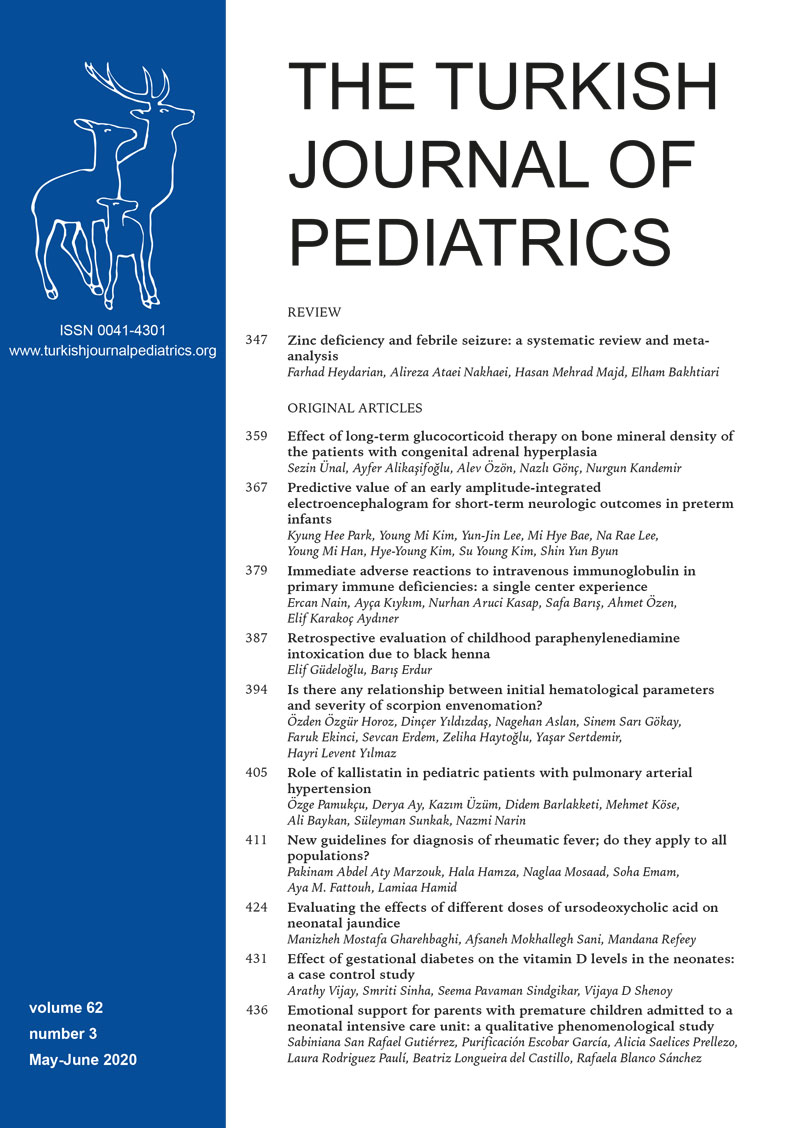Abstract
Background and Objectives. Zinc has been reported to be low in children with febrile seizure compared to febrile cases without seizures, but results are inconsistent. A meta-analysis was performed to systematically evaluate the serum level of zinc in febrile children aged between 6-72 months with or without seizures.
Material and Methods. A systematic search of databases was performed from January 2000 to January 2019. Studies comparing the serum level of zinc in febrile children with or without seizure were selected.
Results. The major outcome was serum level of zinc. Random effect model was used to calculate pooled standardized mean differences (SMD) with 95% confidence intervals (CIs). A total of 31 articles were included. Meta-analysis suggested that the serum level of zinc is lower in patients with febrile seizure versus febrile cases without seizure (SMD: -1.2, 95%CI= (-1.47, -0.93). In subgroup and sensitivity analysis no significant change was observed in pooled SMD. In meta-regression analysis sample size as a continuous variable had a significant influence on between-study variance (p= 0.02). According to cumulative analysis the difference of serum level of zinc in febrile children with or without seizure decreased with time.
Conclusion. This meta-result indicated a significant association of zinc deficiency with seizure in febrile children. It is suspected that decreased level of zinc may be involved in seizure occurrences and it may play a role in the pathogenesis of febrile seizure.
Keywords: children, febrile seizure, zinc levels
Copyright and license
Copyright © 2020 The Author(s). This is an open access article distributed under the Creative Commons Attribution License (CC BY), which permits unrestricted use, distribution, and reproduction in any medium or format, provided the original work is properly cited.














